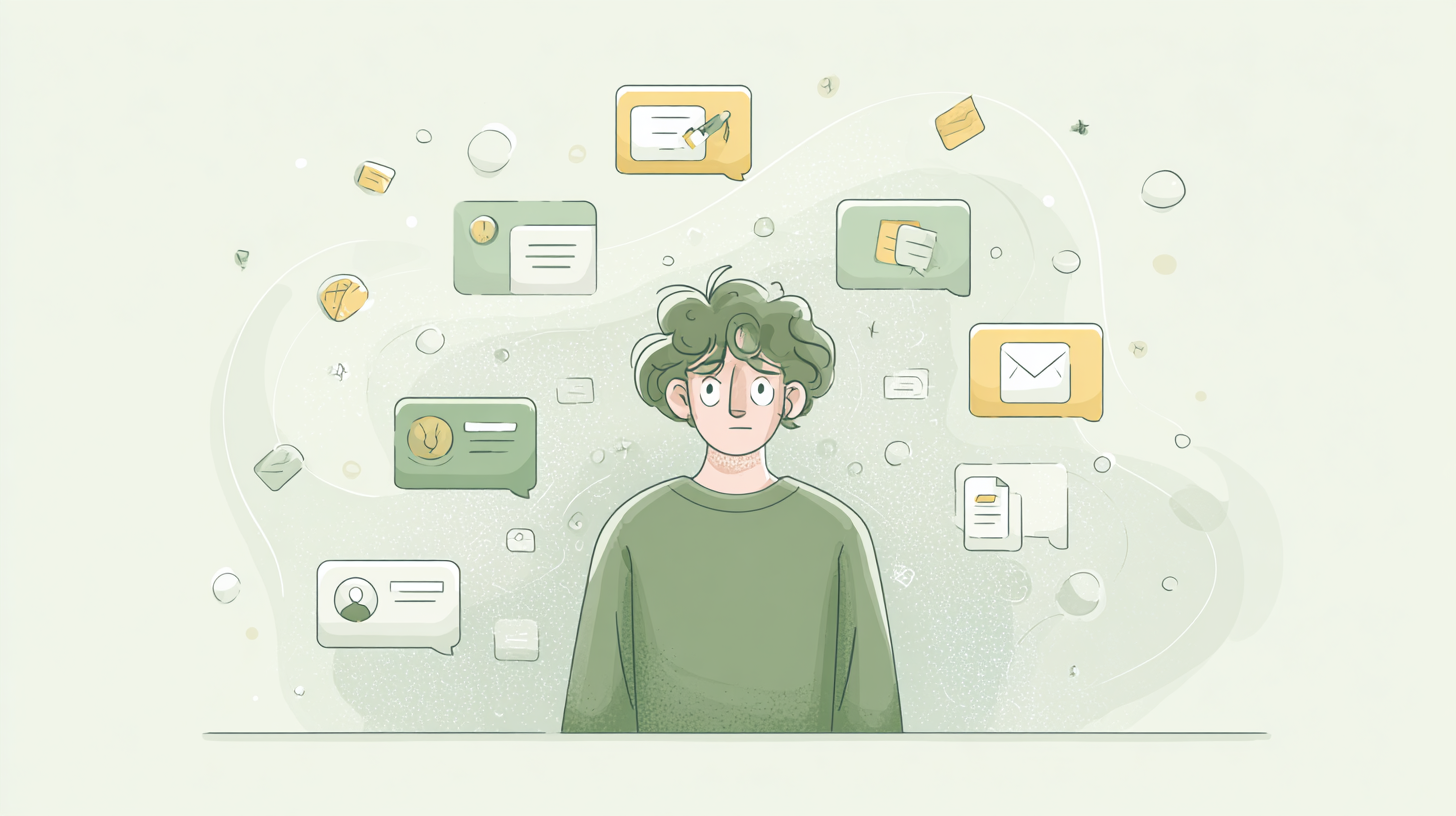
Why Most Reminder Apps Fail ADHD Users (And What We Built Instead)
I live with ADHD and an endless todo list that never gets shorter. Adding “text Mom” to my already overwhelming task pile just created more overwhelm, then guilt when I inevitably didn’t do it.
I needed something that felt like gratitude, not pressure: “Your wife loves you and deserves to feel special today.” Action follows naturally from there. But it took me months away from the project and deep research to truly understand why.
The Personal Problem That Started Everything
I kept forgetting to bring my wife flowers. Not because I didn’t love her, I adore Marie! But because “bring flowers” never naturally occurred to me in the chaos of daily life.
When she’d remind me and I’d buy them, something felt wrong, like I was completing a task instead of expressing love. There was a noticeable difference between “Henry thought of me” and “Henry got reminded about me.” The gesture lost its magic when it became systematic.
So I did what any engineer would do: I tried to build an app to solve it.
The First Attempt (And the Positioning Problem)
I already knew spontaneous reminders were the answer, I just had them tied to the wrong things. My first version prompted actions: “Call Mom,” “Text friend,” “Buy gift for partner.” Traditional task-based thinking with spontaneous timing.
When I surveyed people via Typeform asking if spontaneous reminders alone would be useful, the results split perfectly: 50% said yes, 50% said no. (Since then The Mom Test taught me how to ask better questions.)
At the time, I took this as proof I needed to build both spontaneous AND traditional reminders. Classic feature creep logic: if half want A and half want B, build A+B and make everyone happy, right?
Wrong.
I overengineered a monster. Trying to handle both spontaneous and fixed reminders created complexity that spiraled out of control. The codebase became unwieldy, the user experience confusing, and the development timeline exploded.
Then life happened. We faced unexpected challenges during my wife’s pregnancy that required my full attention, and I had to put the project on hold at the exact moment I was drowning in technical complexity.
The Positioning Breakthrough
When I revisited the project a couple of weeks ago, I had a different interpretation of that 50/50 split. It wasn’t a feature problem, it was a positioning problem.
I wasn’t explaining what spontaneous reminders actually do. People couldn’t envision the value because I was still framing them as task management.
That’s when I went to Reddit and found 15,401 upvotes across just the top 7 posts about ADHD relationship struggles. (There were dozens more, I stopped at seven because the pattern was crystal clear.)
During my 3.5 years as a psychosocial rehabilitation counselor, I worked with individuals managing schizophrenia, bipolar disorder, and severe depression. In that time I learned that different brains need different tools, but I hadn’t yet connected that understanding to my own ADHD experience with relationships.
The Reddit research changed everything.
The Research That Revealed the Real Problem
The most upvoted post (3,657 upvotes) captured it perfectly:
“Sometimes I just… forget to have friends? It’s like I forgot that socializing with people and making friends is, like, something that people do.”
Another with 1,876 upvotes described my exact experience:
“It feels like yesterday that I last talked with them… But you then check your communication history and realize you haven’t had a meaningful conversation in months.”
The comment that hit hardest (1,186 upvotes):
“Maintaining relationships is effortful & feels nearly like busywork.”
I realized I wasn’t building a flower reminder app. I was building an existence reminder system for people who forget other humans exist when they’re not immediately visible.
”I wasn’t building the wrong product. I was explaining it wrong.”
Multi-Channel Validation
But Reddit was just the beginning. I needed to validate these insights with real potential users, not just observe them in the wild.
Instagram Friends Became Beta Testers: I reached out to friends I knew had ADHD, leading to two Typeform surveys that confirmed the Reddit patterns weren’t just online venting—they matched real user experiences.
Bluesky Became My Research Lab: By engaging authentically with the #ADHD community, I have slowly built relationships and gathered insights into other people’s experiences. Each interaction validated what I’d learned from Reddit.
The pattern was universal: we don’t just forget to call people. We forget people exist outside our immediate environment.
The Neuroscience That Explained Everything
That’s when I discovered why traditional reminders fail so spectacularly for ADHD brains.
The dopamine problem: ADHD brains have baseline deficits in dopamine, our motivation neurotransmitter. Adding relationship tasks to an already overwhelming todo list creates avoidance, not action.
The gratitude solution: Research from UC Riverside shows that “gratitude acts as an activating, energizing force” that triggers dopamine release. Starting with “Mom loves you and would love to hear from you” instead of “Text Mom” changes the entire neurochemical equation.
The research that validated our approach:
- 78% of ADHD individuals who snooze once will snooze indefinitely
- ADHD individuals experience 4x more decision fatigue with deferral options
Traditional productivity apps were designed for neurotypical brains. They assume that more features, more control, and more precise scheduling will solve executive dysfunction. But for ADHD brains, that approach creates more problems than it solves.
Building Something Different
Armed with this research, I rebuilt Spontaneity from scratch. Not a productivity app, not a relationship CRM, but an emotional support tool for people whose love gets lost in the chaos.
The core insight: Instead of turning relationships into tasks, help people start from gratitude.
Instead of: “Text Mom! 💬“
We say: “Mom loves you and would love to hear from you today 💛“
The technical features that actually matter for ADHD:
- No snooze button (binary: Done or Auto-reschedule)
- Random timing within windows (prevents pattern blindness)
- Gratitude-based language (dopamine activation over task pressure)
- Zero configuration (smart defaults based on relationship type)
- Existence focus (reminds you people exist, not what to do about it)
Why This Matters for Product Development
Those 15,401 upvotes represent millions of people whose brains work differently. We’re not broken. We’re not bad friends or partners. We just need tools built for how we actually work.
The productivity industry keeps trying to optimize us into neurotypical patterns. What we actually need is technology that works with our brains, not against them.
Your neurodivergent users are already telling you what’s broken. They’re documenting their pain across Reddit, Discord, and every community where they feel safe being honest about their struggles. The question is: are you listening, or are you building another app that makes them pay $15/month to feel worse about themselves?
The Hyperfocus AI Method
This research process from failed assumption to validated user insight through systematic community research is exactly what we deliver through Hyperfocus AI’s technical product strategy.
Our approach:
- Discover: Identify where your specific users voice their actual problems (communities, support tickets, industry forums, user interviews)
- Validate: Test assumptions through appropriate channels (surveys, prototypes, stakeholder interviews, pilot programs)
- Analyze: Find patterns across all available data sources
- Strategize: Design solutions that address root causes, not surface symptoms
- Build: Prototype based on validated insights, not assumptions
For Spontaneity, this meant analyzing 15,401 upvotes, conducting targeted surveys, and building authentic relationships in the ADHD community. The result: a product that serves a real need instead of creating new problems.
What This Means for Builders
Regardless of your intended audience or community, your users are already telling you everything you need to know. They’re just not always in your surveys, focus groups, or immediate social or professional circles. They’re in the spaces where they feel safe being vulnerable about their real struggles.
We help founders find these insights and build products that actually serve underserved communities. Not by guessing what they need, but by discovering where they’re already talking about what’s broken.
Spontaneity launches on TestFlight soon. Join the beta waitlist to be among the first to try emotional support for ADHD relationships: TrySpontaneity.app
At Hyperfocus AI, we provide strategic product direction for founders navigating complex user needs. Through systematic research and technical assessment, we help you validate the right solution before you build—saving months of development and thousands in wrong turns.
About the author: Henry Doce spent 3.5 years as a psychosocial rehabilitation counselor before becoming a software engineer. He has ADHD, builds products quickly, and forgets why he walked into a room at least once a day.


